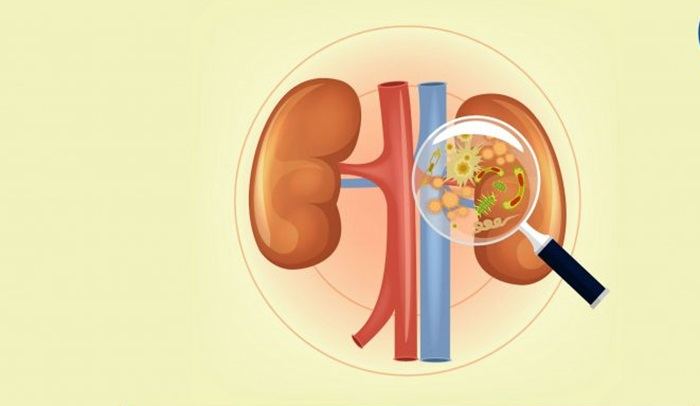Thiazide diuretics are a class of medications commonly prescribed to manage hypertension and fluid retention associated with conditions such as heart failure, chronic kidney disease, and cirrhosis. These drugs are effective in reducing blood pressure and preventing cardiovascular events; however, they are also associated with several metabolic side effects, including hyperlipidemia. Understanding how thiazide diuretics cause hyperlipidemia is crucial for healthcare providers to manage these side effects effectively and ensure optimal patient outcomes.
Mechanism of Action of Thiazide Diuretics
Thiazide diuretics, including hydrochlorothiazide, chlorthalidone, and indapamide, work by inhibiting the sodium-chloride symporter in the distal convoluted tubule of the nephron. This inhibition leads to increased excretion of sodium and chloride, along with water, resulting in decreased blood volume and, consequently, lowered blood pressure.
The reduction in blood volume also reduces the cardiac output, contributing further to the antihypertensive effect.
Pathophysiology of Hyperlipidemia Induced by Thiazide Diuretics
1. Changes in Lipid Metabolism
Thiazide diuretics have been shown to alter lipid metabolism, leading to an increase in serum cholesterol and triglyceride levels. This effect is believed to be mediated by the drug’s impact on insulin sensitivity and glucose metabolism. Thiazides can induce insulin resistance, which, in turn, impairs the ability of insulin to suppress lipolysis in adipose tissue. This leads to increased free fatty acid (FFA) levels in the blood, which are taken up by the liver and used for triglyceride synthesis, resulting in elevated triglyceride levels.
SEE ALSO: What Medications Can Cause Hyperlipidemia?
2. Effect on Insulin Sensitivity
Insulin resistance is a key factor in the development of hyperlipidemia.
Thiazide diuretics can decrease insulin sensitivity by increasing the release of potassium from the cells, leading to hypokalemia.
Hypokalemia reduces insulin secretion from the pancreatic beta cells, contributing to hyperglycemia and insulin resistance. Insulin resistance not only increases the release of FFAs but also reduces the activity of lipoprotein lipase (LPL), an enzyme critical for the clearance of triglyceride-rich lipoproteins from the bloodstream.
3. Impact on Adipose Tissue
Thiazide diuretics may also have a direct effect on adipose tissue. By increasing the intracellular concentration of sodium, thiazides can enhance the activity of hormone-sensitive lipase (HSL), an enzyme responsible for the breakdown of triglycerides in adipocytes. This results in the release of FFAs into the circulation, further contributing to hyperlipidemia.
4. Influence on Hepatic Lipid Synthesis
The liver plays a central role in lipid metabolism, and thiazide diuretics can influence hepatic lipid synthesis. Increased FFA flux to the liver promotes the synthesis of triglycerides and very-low-density lipoprotein (VLDL) particles. Additionally, thiazide-induced insulin resistance may alter the hepatic expression of genes involved in lipid metabolism, exacerbating hyperlipidemia.
Clinical Evidence of Thiazide-Induced Hyperlipidemia
Several clinical studies have demonstrated the association between thiazide diuretics and increased lipid levels. For example, a meta-analysis of randomized controlled trials found that thiazide diuretics significantly increased total cholesterol and triglyceride levels compared to placebo. Another study reported that patients on thiazide diuretics had higher levels of low-density lipoprotein (LDL) cholesterol and lower levels of high-density lipoprotein (HDL) cholesterol, further highlighting the adverse lipid profile associated with these drugs.
Management of Thiazide-Induced Hyperlipidemia
1. Monitoring and Assessment
Regular monitoring of lipid levels in patients taking thiazide diuretics is essential. Baseline lipid profiles should be obtained before initiating therapy, and periodic follow-up measurements should be conducted to detect any significant changes.
SEE ALSO: Which Body System Is Responsible for Hyperlipidemia?
2. Lifestyle Modifications
Lifestyle modifications are the first line of defense in managing thiazide-induced hyperlipidemia. Patients should be encouraged to adopt a heart-healthy diet rich in fruits, vegetables, whole grains, and lean proteins. Reducing the intake of saturated fats, trans fats, and cholesterol can help improve lipid profiles. Regular physical activity, weight management, and smoking cessation are also important components of a comprehensive lifestyle intervention.
3. Pharmacological Interventions
In some cases, lifestyle modifications may not be sufficient to manage hyperlipidemia, and pharmacological interventions may be necessary.
Statins are commonly prescribed to lower LDL cholesterol and reduce cardiovascular risk. Other lipid-lowering agents, such as fibrates, niacin, and omega-3 fatty acids, may also be considered based on the patient’s specific lipid profile and risk factors.
4. Potassium Supplementation
Addressing hypokalemia can help mitigate insulin resistance and its associated effects on lipid metabolism. Potassium supplementation or the use of potassium-sparing diuretics, such as spironolactone or amiloride, can be beneficial in patients with thiazide-induced hypokalemia.
5. Alternative Antihypertensive Agents
In patients who develop significant hyperlipidemia while on thiazide diuretics, switching to alternative antihypertensive agents may be considered. Angiotensin-converting enzyme (ACE) inhibitors, angiotensin II receptor blockers (ARBs), calcium channel blockers, and beta-blockers are effective alternatives that do not typically adversely affect lipid metabolism.
Conclusion
Thiazide diuretics are effective antihypertensive agents with a well-established role in the management of hypertension.
However, their use is associated with metabolic side effects, including hyperlipidemia. The mechanisms underlying thiazide-induced hyperlipidemia involve alterations in insulin sensitivity, lipid metabolism, and adipose tissue function.
Clinicians should be vigilant in monitoring lipid levels in patients on thiazide therapy and implement appropriate lifestyle and pharmacological interventions to manage hyperlipidemia.


